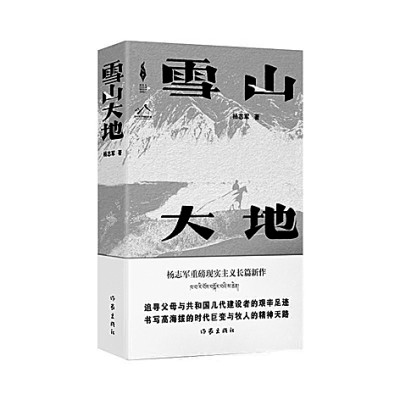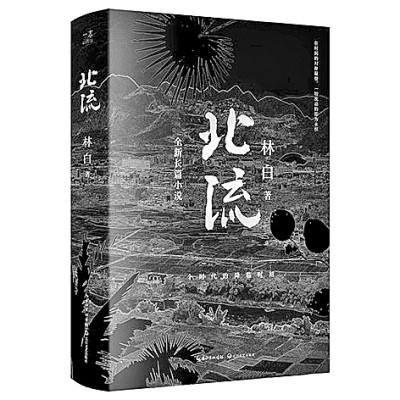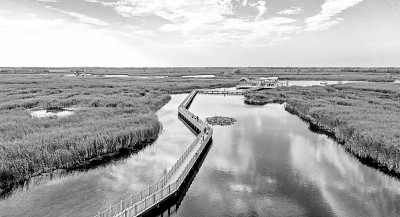In the past two years, the blowout state of novel creation has far exceeded expectations. The writers seem to be a common agreement, which promotes the prosperity of novels. It is too difficult to sum up common tendencies worthy of attention from a large number of works, but through concentrated reading, some common tendencies and characteristics can still be read.
Strengthen the unique logo of the work with strong locality and enhance recognition
From the point of view of creative practice, novels are facing difficulties in many aspects. The “smart tricks” in artistic expression have long been exhausted, and it is difficult for writers to find new ideas and new breakthroughs. In the past few years, through the analysis of many novels, I found that novelists are trying to find a breakthrough direction through “fusion”, that is, trying to combine traditional and modern, elements of popular novels and themes of serious novels in a new way. Integration, to break through various established barriers, to form a creative situation that can not only win a wide range of readers, but also maintain a pure taste.
Focusing on reading almost “crazily produced” novels, I have some new insights, that is, novelists suddenly concentrate on strengthening locality. This kind of locality has at least two functions: it emphasizes the sense of hometown while highlighting the locality, that is, the so-called “locality” is actually a certain hometown complex of the writer himself; this kind of locality does not exist as the opposite of modernity, Instead, it strives to integrate with modernity, and even become an important part of it. We have seen that works with geographical names as novel titles have been launched in a centralized manner. These geographical references are big and small, ancient and modern, fictional and real. For example, “Wilderness”, “Beiliu”, “Benba”, “Bao Shui”, “Home Mountain”, “Yan Xia Li”, “Liangzhou Eighteen Shoots”, “Golden Market”, “Suzhou River”, “On Baiyangdian Lake”, “Snow Mountain Land”, “Qin Ling Ji” “, “Copper Bank”, “City of Steel”, “Looking at the South of the Yangtze River”, “The Gate of Yifeng”, “The Bend of the River”, “Tianlu Bay”, “Introduction to Wujiang River”, “Old Bohai Sea”, etc.
Of course, what is more important is the style characteristics reflected in the novel. Qiao Ye’s “Bao Shui” is quite representative. This is a work with a clear theme, directly writing about rural revitalization in the new era. The locality of the novel is most prominently manifested in the language. By adding a large number of more dynamic dialects and colloquialisms, the local specificity of the characters’ stories is strengthened. This kind of dialect slang has been extended to the city, county, and even village level, which greatly activates the dynamics of the novel.
Showing uniqueness with locality, highlighting cultural color with description of folk culture, and expressing artistic personality with extensive use of dialect and slang have become the common choices of writers. Wang Yuewen’s “Home Mountain” directly brings dialect into the narrative language, not just in the dialogue of characters. Regardless of whether the reader directly understands the meaning of the language, the writer never makes any “narration-style” annotations, but allows readers to comprehend and perceive through repeated use. Sentence patterns like this can be found throughout the entire article.

What must be emphasized is that the dialogue between the characters and even the narration language are “too dregs”, which not only highlights folk customs and regional customs, but also reflects a certain artistic consciousness of modern transformation.
Ge Liang’s “Yan Shi Ji” is mixed with a lot of Cantonese dialects, and the difficulty of reading is obvious. However, as you read more deeply, you will find that half-understanding has its own advantages, and they create a strange and strange effect. It may not be easy to understand each character separately, but it seems to be understandable when they are combined, and there is a strong sense of presence and Lingnan color.
The lotus lake flavor of Fu Xiuying’s “Wild Hope”, the southern taste of Lin Bai’s “Northern Flow”, the southern Hokkien accent of Cai Chongda’s “Destiny”, and the Meishan temperament of Huo Xiangjie’s “Corona”, each has its own characteristics and has a highly identified region style. Even a former avant-garde novelist like Xu Kun, in his new work “Sacred Marriage”, still makes people read a strong Northeast flavor. Moreover, I insist that those male and female characters who dare to love, dare to hate, love to cry and laugh, and those stories full of running, noise, conflicts and entanglements in the stories of the novel will be unified and reversed and return to harmony and beauty at the end of the novel. It reflects the love and trust between the characters. This kind of treatment is in line with the characteristics of the stylized structure of Northeast sketches, which is very interesting.

While deliberately leaving the color of autobiography, write a kind of spiritual hometown that transcends the individual
Shao Li’s “Golden Branches” is a grand narrative of family history. But all histories are actually written after being filtered through the eyes and emotions of the main members of the “I” family, with a strong subjective color and emotional essence. This kind of narrative method avoids the strict century-old narrative mode in a plain and natural way, and effectively integrates the grand history and ethical family affection with a tone full of character, showing a distinctive artistic style and a full-bodied novel temperament.
Wei Wei’s “In the Haze” is also a dialogue between ordinary people and history, but it is more direct in presentation. Like novels, some traces of autobiography are intentionally left. This is not the similarity and connection between the author and the characters in some aspects, but the full disclosure of his birth, growth, destiny, and destination, which is almost a non-fictional life inventory. Starting from Lizhuang, Tianzhuang traveled all the way to Guangdong, where she had long been longing for, and was at the forefront of reform and opening up. The wonderful combination of tiny life individuals with major historical events and the situation of the times makes the era hit every individual life like a huge wave, and it also stands in front of every individual like a Great Wall.
A similar approach left its imprint on several novels. For example, “Yan Shi Ji”, which takes food culture as the theme, although the story of the core characters is fictional, there are traces of documentary. The narrator “I” at the beginning of the novel is not a participant in the story of the novel, but can be regarded as an intervener. Because he came to do a field research in the name of academics. The novel also includes his own experience of studying in Hong Kong and living in Lingnan area. Readers who are a little familiar with Ge Liang will know that this is actually a documentary trace left by him deliberately. It is such a narrative strategy that makes the stories of the characters in the novel lively, coming in and out freely and complementing each other.

It has become the conscious pursuit of writers to show historical changes through the struggle of ordinary people in a certain region, especially to reflect the historical changes that have occurred in the new era. The picture shows Baiyangdian Lake.profile picture
Using micro-regions and small people to reflect the vicissitudes and transformations of the great era
In recent years, the Chinese Writers Association has advocated the establishment of the “New Era Literary Climbing Project” and the “New Era Creation Project for Great Changes in Mountains and Rural Areas”. It should be said that the current influential novels are also practicing this advocacy in many ways. These works consciously present historical changes through the struggle and life of ordinary people, especially reflect the historical changes in the new era, and at the same time strive to reflect the new creative atmosphere with the power of thought and artistic quality.
We can use the themes of many works to connect a history of Chinese revolution, construction, reform, and development in the new era.
Sun Ganlu’s “A Thousand Miles of Rivers and Mountains”, Xu Guixiang’s “The Sound of the Piano Flying Over the Wilderness”, Miao Changshui’s “Old Bohai Sea”, Ma Boyong’s “The Great Doctor”, Huo Xiangjie’s “The Corona”, Pompeii’s “Wujiang Yin”, Haifei’s “Suzhou Creek” and others are all works that show the battle process of revolutionaries, but each has its own special skills and characteristics in writing.
“A Thousand Miles of Rivers and Mountains” is a hard-core revolutionary historical work, and it is also a novel with great story intensity. At the same time, its narrative style also has a fresh, energetic, and fascinating avant-garde flavor. The sense of imagery, drama, intricate character relationships, intense and exciting struggle between the enemy and the enemy, scattered urban landmarks and numerous images all make this novel with a clear theme and a firm stand show multiple charming colors.
While showing major themes, the writers can also show the complexity and multipleness of history, reflect the internal relationship between major history and the survival and life of ordinary people, and embody mature creative thinking and aesthetic concepts. “Home Mountain” is a work that is difficult to summarize with a certain theme. This is a work about hometown, China, and history, and it is also a work about ideals, the love of children, and the feelings of family and country. To a certain extent, Shao Li’s “Golden Branch” can also be viewed in the same way.
In terms of traditional themes, there are also works that focus on the “unpopular” field of industrial themes, such as “Chang’an” by A Ying, “Dai Hua” by Shui Yunxian, “City of Steel” by Luo Rixin, and “About Farewell to Everything” etc. However, these works cannot be simply summed up in terms of industrial themes. They obviously have more creative appeals.
Since the reform and opening up, especially since the new era, China’s reform and development and the changes in people’s spiritual world are also presented in the new novel. Liang Xiaosheng’s “Chinese Peach and Plum” focuses on expressing the spiritual growth history of post-80s youth, and Shi Yifeng’s “Soul Spear” by post-75 writer Shi Yifeng focuses on describing the blood, joys and sorrows of young people in the electronic age wandering between illusion and reality. Guan Renshan’s “On Baiyangdian” describes the changes in Baiyangdian New District, and Lu Min’s “Golden River” shows the process of enterprise reform, especially paying deep attention to the changes in the human spiritual world and the spiritual agitation.
Telling Chinese stories well has become the common pursuit and creative consciousness of Chinese writers. Writers strive to find materials and themes from tradition, transform them into modernity, dig out themes in the refinement of real life, and perform artistic expression. The Chinese legend in Li Hao’s “Legend of the Kitchen King”, the Chinese manufacturing in Lao Teng’s “Copper Line”, the Chinese mountains and rivers in Jia Pingwa’s “Qinling Ji”, and the Chinese ancient town in Xiong Yuqun’s “Golden Market” all left me with unforgettable memories. Unforgettable reading experience and rich harvest.
The artistic exploration of novelists, including the in-depth excavation of thought, makes me always feel that a new novel atmosphere is taking shape. Ai Wei’s “In the Mirror” deserves special attention. This is an adventurous and exploratory work. The novel’s description of the extreme circumstances of life, the extreme state of human nature, and the extreme situation of emotion, as well as the resolution and redemption of sharp conflicts and conflicts, have produced extraordinary inner strength.
Faced with a large number of novels, I can only give a detailed description, let alone analyze them one by one with proper understanding, but these works can be described as colorful and dizzying, and there are many novels worth reading and commenting on.
We are delighted with what we have gained and look forward to new blooms.
“Guangming Daily” (version 06, May 3, 2023)
[
责编:张倩 ]
